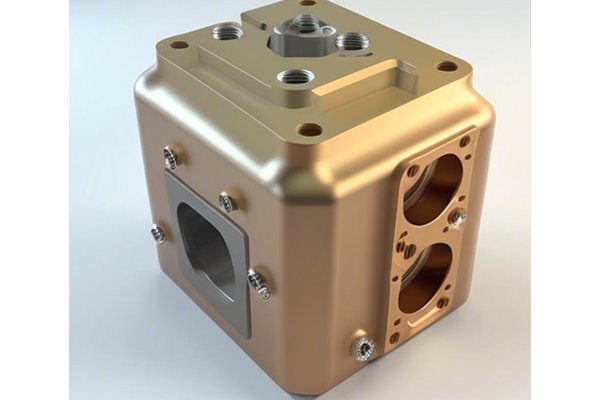Did you know that CNC (Computer Numerical Control) machining has been a game changer in the manufacturing industry since it first emerged in the 1950s? Today, CNC machining is responsible for the precise fabrication of more than 60% of all machined parts used in various applications. As manufacturing has advanced, evaluating the impact of CNC machining on material properties, particularly impact resistance and durability, has become crucial for engineers and designers. This comprehensive blog dives deep into the methodologies, tools, and technologies that allow manufacturers to assess the effects of CNC machining on material performance, ensuring quality and reliability in their final products.
Understanding CNC Machining
Before delving into how we evaluate the impact of CNC machining on materials, it’s essential to understand what CNC machining entails. At its core, CNC machining is a subtractive manufacturing process that utilizes computerized controls to cut and shape material into specific dimensions. Parts are created from a variety of materials, including metals, polymers, ceramics, and composites, making CNC machining a versatile tool in the manufacturing arsenal.
With the rise of automation and computer technology, CNC machining offers several advantages over traditional machining processes, including:
Evaluating Material Impact Resistance
Material impact resistance refers to a material’s ability to withstand sudden forces or shocks without failing. It’s an important characteristic, especially for components that will experience dynamic loading, such as automotive, aerospace, and structural applications. To evaluate the impact resistance of materials after CNC machining, several parameters must be considered:
Material Selection
The first step in assessing impact resistance begins with the choice of material. Different materials possess inherent properties that affect their performance under impact loading. For instance, materials such as aluminum alloys may offer lightweight options but may vary greatly in durability compared to high-strength steels. Polycarbonate plastics may be exceptionally tough but yield differently than metals. Therefore, engineers must select materials based on intended use, mechanical properties, and environmental factors.
Machining Parameters
CNC machining parameters significantly influence the mechanical properties of the material being processed. Factors such as feed rate, cutting speed, and tool geometry can affect the material’s microstructure and, consequently, its impact resistance. For example:
Each of these parameters must be optimized based on the material being machined to maintain or enhance impact resistance.
Post-Processing Treatments
After CNC machining, many materials undergo post-processing treatments, which can further enhance their mechanical properties. Techniques such as heat treatment, surface hardening, and crosslinking (for polymers) can improve a material’s resistance to impact. For example, aluminum can be heat-treated to form a stronger temper, while plastics may undergo thermal stabilization to improve their impact strength.
Testing for Impact Resistance
There are several standardized tests used to evaluate the impact resistance of machined components. Among the most common methods are:
Charpy and Izod Impact Tests

These tests involve striking a notched sample with a pendulum to measure the energy absorbed by the material before it breaks. The choice between Charpy and Izod tests depends on the sample orientation and notching geometry.
Drop Weight Tests
In drop weight tests, a weight is dropped from a specified height onto a test specimen. The amount of energy absorbed during the impact is measured, allowing for a direct assessment of impact performance.
Dynamic Impact Tests
Dynamic testing involves subjecting the material to repeated cyclic loads to assess how it behaves under real-world conditions of impact and vibration. This is essential for materials used in high-stress applications, where fatigue may lead to premature failure.
Evaluating Durability in CNC Machining
Durability refers to a material’s ability to endure wear, corrosion, and other environmental factors over time. Evaluating durability involves looking beyond impact resistance and considering the following factors:
Wear Resistance Testing
Wear resistance is evaluated through tests such as abrasion resistance and friction testing. In these situations, samples are subjected to controlled sliding or rolling contact against a standard material to measure wear rates, which can predict how long a given material will last under normal operating conditions.
Corrosion Testing
For metals and some composites, corrosion resistance is crucial. Various tests, including salt spray and cyclic corrosion tests, evaluate a material’s ability to withstand corrosive environments. The results can inform material selection for outdoor or chemically aggressive applications.
Environmental Stress Screening
Once components leave the manufacturing floor, they must endure diverse environmental conditions that could affect their durability. Accelerated life testing (ALT) simulates these conditions under controlled environments to measure performance over time.
The Importance of Material Evaluation
The importance of evaluating the impact resistance and durability of materials cannot be overstated. Poorly evaluated parts can lead to catastrophic failures in critical applications, resulting in downtime, increased costs, and safety hazards. Here’s why systematic evaluation is crucial:
**
In summarizing the evaluation techniques for assessing the impact resistance and durability of materials subjected to CNC machining, it is clear that a multifaceted approach is necessary. Through careful material selection, optimization of machining parameters, strategic post-processing techniques, and rigorous testing, manufacturers can ensure that their parts not only meet but exceed industry standards for performance and reliability.
As the manufacturing industry continues to evolve, the value of understanding CNC machining’s impact on material properties becomes increasingly vital. From aerospace to automotive and beyond, tough, durable, and reliable materials are more than just a regulatory requirement—they are the backbone of safe and effective engineering solutions.
By embracing a proactive approach in evaluating materials, you’re not just responding to today’s needs but also preparing for the challenges of tomorrow. Remember that rigorous evaluation leads to superior products and reflects a commitment to excellence in machining and manufacturing. Your choice in material analysis today shapes the future of your production tomorrow.






